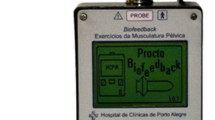Abstract
Fecal incontinence is a socially disabling symptom for which rectosphincteric biofeedback has been reported to be dramatically effective. The most commonly employed biofeedback procedure incorporates three separate and potentially effective components: (1) exercise of the external sphincter muscle, (2) training in discrimination of rectal sensations, and (3) training synchrony of the internal and external sphincter responses. This paper reports the results of single case experiments employed with eight incontinent patients to examine the contributions of each of these components. All eight patients improved, but only one required the biofeedback procedure as it was originally described. Three responded to sensory discrimination training, one to exercise training, and one to the training of synchronous sphincteric responses; three recovered independently of the effects of biofeedback. Despite the achievement of continence, the rectosphincteric reflexes following treatment continued to be abnormal in every case. These findings suggest that the character of the external sphincter response to rectal distension is an unreliable index of sphincter function and that exercise and sensory discrimination training procedures are effective for some cases of fecal incontinence.
Similar content being viewed by others
References
Almy, T. P., & Corson, J. A. (1979). Biofeedback — The light at the end of the tunnel?Gastroenterology, 76 874–876.
Cerulli, M. A., Nikoomanesh, P., & Schuster, M. M. (1974). Operant conditioning of rectosphineteric responses in the treatment of fecal incontinence.New England Journal of Medicine, 290 646–649.
Goldenberg, D. A., Hodges, K., Hersh, T., & Jinch, H. (1980). Biofeedback therapy for fecal incontinence.American Journal of Gastroenterology, 74 342–345.
MacLeod, J. H. (1979). Biofeedback in the management of partial anal incontinence.Diseases of the Colon and Rectum, 22 169–171.
Olness, K., & McParland, F. A. (1980). Biofeedback: A new modality in the management of children with fecal soiling.Journal of Pediatrics, 96 505–509.
Schiller, L. R., Santa Ana, C., Davis, G. R., & Fordtran, J. S. (1979). Fecal incontinence in chronic diarrhea.Gastroenterology, 77 751–753.
Schuster, M. M. (1975). The riddle of the sphincters.Gastroenterology, 69 249–262.
Schuster, M. M., Hookman, P., Hendrix, T. T., & Mendeloff, A. I. (1965). Simultaneous manometric recording of internal and external anal sphincteric reflexes.Bulletin of the Johns Hopkins Hospital, 116 79–88.
Whitehead, W. E., Orr, W. C., Engel, B. T., & Schuster, M. M. (1982). External anal sphincter response to rectal distention: Learned response or reflex.Psychophysiology, 19 57–62.
Author information
Authors and Affiliations
Additional information
The work described in this paper was supported by Grant No. MA 6241 from the Medical Research Council of Canada.
Rights and permissions
About this article
Cite this article
Latimer, P.R., Campbell, D. & Kasperski, J. A components analysis of biofeedback in the treatment of fecal incontinence. Biofeedback and Self-Regulation 9, 311–324 (1984). https://doi.org/10.1007/BF00998975
Issue Date:
DOI: https://doi.org/10.1007/BF00998975




